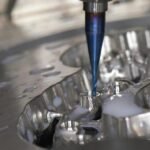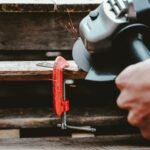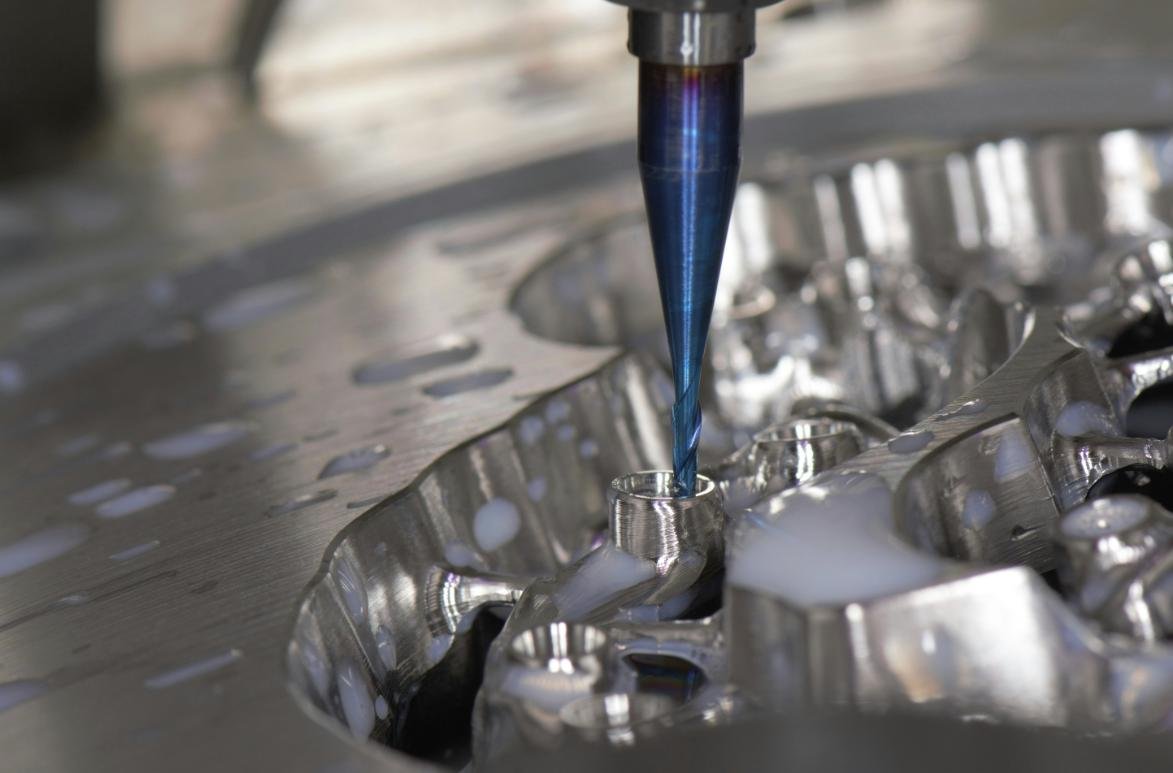Introduction to CNC Milling
Computer Numerical Control (CNC) milling represents a pivotal advancement in the realm of manufacturing, illustrating a sophisticated intersection between technology and craftsmanship. At its core, CNC milling refers to a machining process that employs computer systems to control the movement of tools within a manufacturing setting. This precise and automated approach allows for the creation of complex components with minimal human intervention, exemplifying the evolution of traditional machining techniques.
The process operates by using a computer program to dictate the exact movements of milling machines, which are equipped with cutting tools. These machines can manipulate materials such as metal, plastic, and wood, facilitating the production of a variety of intricate parts and components. The programming typically involves G-code, a language that provides detailed instructions regarding tool paths, speeds, and feed rates, allowing engineers to achieve remarkable levels of accuracy.
CNC milling machines can feature vertical or horizontal configurations, with each type catering to specific manufacturing requirements. The choice of configuration affects the tool’s approach and the resulting design of the finished product. This technology is widely revered for its ability to produce repeatable and consistent outcomes, significantly reducing the margin for error associated with manual machining processes.
The significance of CNC milling in modern manufacturing cannot be overstated. Industries such as aerospace, automotive, and electronics increasingly rely on CNC technology to meet their precision demands. By reducing lead times and enhancing productivity, CNC milling plays a vital role in maintaining competitiveness within global markets. Furthermore, as industries evolve, the integration of advancements in CNC technology continues to enhance accuracy, thereby cementing its importance as a cornerstone of contemporary manufacturing practices.
Understanding Accuracy in CNC Milling
Accuracy in CNC (Computer Numerical Control) milling refers to the degree to which a manufactured part matches the intended design specifications. It is a critical aspect of the CNC milling process, as it directly impacts the quality and functionality of the finished product. To fully grasp the concept of accuracy, it is essential to differentiate it from precision. While accuracy pertains to the closeness of a measured value to a standard or true value, precision denotes the consistency of repeated measurements. Essentially, a CNC machine can yield precise results but may not necessarily be accurate if it consistently deviates from the desired specifications.
Several factors influence the accuracy of CNC milling machines. One of the primary determinants is the calibration of the machinery. Proper calibration ensures that the machine operates within its specified parameters, allowing the end product to closely align with the design requirements. Regular maintenance is also crucial, as it helps to prevent inaccuracies that can arise from wear and tear over time. For instance, worn-out bearings or lead screws can result in deviations that affect the overall accuracy.
Tooling also plays a significant role in achieving accurate results. The quality of the cutting tools, including their geometry and condition, can have a profound impact on the milling accuracy. Dull or damaged tools may generate errors that further compromise the precision of the component being machined. Additionally, the setup of the CNC machine, including the selection of the right feed rates and cutting speeds, impacts how accurately it can reproduce the design.
Ultimately, achieving high accuracy in CNC milling requires attention to detail in calibration, maintenance, tooling, and setup. By understanding and addressing these factors, manufacturers can enhance the reliability of their CNC operations and ensure that the final products meet the predetermined specifications.
Factors Influencing CNC Milling Accuracy
The accuracy of CNC milling is influenced by a multitude of factors that can significantly affect the machining process and final product quality. One of the primary determinants is the machine specifications. This includes the design of the CNC machine, its ability to maintain tight tolerances, and the precision of its components, such as linear guides and ball screws. Higher-end machines, often equipped with advanced features like thermal stabilization and rigid construction, can achieve remarkable precision levels.
The quality of tooling also plays a crucial role in CNC milling accuracy. The cutting tools must be manufactured to high standards, with appropriate geometry and sharpness to minimize wear and produce clean cuts. Dull or improper tools can lead to inaccuracies, rough finishes, and premature tool failure, ultimately impacting production efficiency.
Another significant factor is the properties of the material being machined. Different materials respond variably to cutting forces and can expand or contract under heat. For instance, metals such as aluminum may offer better machinability compared to tougher materials like titanium. Understanding the material characteristics, including hardness, toughness, and thermal conductivity, is essential for optimizing CNC milling processes.
The environmental conditions where CNC milling takes place are equally important. Factors such as temperature fluctuations, humidity, and vibration can adversely impact machining accuracy. Machines should preferably be operated in temperature-controlled environments to ensure consistency in material properties and machine performance.
Lastly, the expertise of the operator significantly influences CNC milling accuracy. Skilled operators are adept at selecting appropriate machining parameters and can make real-time adjustments to improve precision. Their knowledge of the machinery, tools, and materials, combined with experience, is vital in achieving the desired level of accuracy in CNC milling operations.
Measuring Accuracy in CNC Milling
Measuring accuracy in CNC milling is an essential aspect of quality control in manufacturing. It involves the assessment of machined parts to ensure they meet specified tolerances and geometric requirements. Various tools and methodologies are employed to evaluate this accuracy, providing manufacturers with critical insights into their milling processes. Three primary tools used for measuring accuracy include gauges, comparators, and coordinate measuring machines (CMMs).
Gauges are simple yet effective devices that can rapidly determine whether dimensions fall within acceptable limits. These tools can be specially designed to measure specific features—such as diameter, thickness, or depth—of the machined parts. Utilizing dial indicators or digital calipers, gauges offer a straightforward method for quickly assessing the precision of CNC machined components.
Comparators serve a similar purpose but are more sophisticated. They involve a reference standard against which a part is measured. Employing optical or mechanical comparators allows for precise assessments of form and size deviations from the ideal specifications. This tool is invaluable for detecting minor discrepancies that could significantly impact the performance of the final product.
The most advanced method for assessing CNC milling accuracy is the use of Coordinate Measuring Machines (CMMs). These machines utilize a probe to touch points on the surface of a part and gather data across three dimensions. The information collected is then compared against CAD models to gauge the part’s conformity to design specifications. CMMs are widely regarded as the most accurate method for measurement, capable of detecting minute variations down to microns.
In addition to these tools, the concepts of tolerances and geometric dimensioning and tolerancing (GD&T) play a prominent role in CNC milling accuracy. Tolerances define allowable deviations from nominal dimensions, while GD&T provides a system for specifying the permissible limits of form, orientation, and position of features. By integrating these measurement tools and methodologies with effective tolerance techniques, manufacturers can enhance the overall accuracy of their CNC milling processes.
Common CNC Milling Tolerances
CNC milling is highly regarded for its ability to produce components with exceptional precision. A critical aspect of this precision is the tolerance level, which refers to the allowable deviation from a specified dimension in the manufacturing process. Understanding common CNC milling tolerances is crucial for ensuring that machined parts meet the required specifications for their intended applications. Tolerances are expressed in numerical values that reflect how much a part can deviate from its nominal dimensions, and these values can vary significantly based on the type of material and the complexity of the design.
In the realm of CNC milling, the typical tolerance range is between ±0.005 inches to ±0.020 inches for metals, such as aluminum and stainless steel. However, for high-precision applications, tighter tolerances may be required, often ranging from ±0.001 inches to ±0.005 inches. Plastics and composites tend to have slightly looser tolerances, usually between ±0.010 inches to ±0.020 inches, due to their more forgiving nature during machining. Achieving specific tolerances depends on several factors, including tool selection, machine capabilities, and the overall design intricacy.
Selecting appropriate tolerances is essential for the success of any CNC milling project. Overly precise tolerances can lead to unnecessary production costs and longer lead times, while excessively loose tolerances may compromise the functionality of the final product. Engineers and designers must carefully evaluate their project’s requirements to determine the optimal tolerances that balance accuracy, cost, and feasibility. By understanding and applying the correct CNC milling tolerances, manufacturers can enhance operational efficiency and ensure that fabricated parts consistently meet customer specifications.
Benefits of CNC Milling Accuracy
The precision of CNC milling is a critical factor that significantly influences various aspects of manufacturing and production. One of the primary benefits of CNC milling accuracy is the improvement in product quality. By ensuring that components are machined to exact specifications, manufacturers can produce parts that fit together seamlessly. For instance, in the aerospace industry, where safety and reliability are paramount, precisely milled components contribute to the overall performance and integrity of aircraft systems. This high level of accuracy reduces the chance of defects, ensuring that the products meet or exceed industry standards.
Another notable benefit is the reduction of waste during the manufacturing process. CNC milling operates with remarkable precision, which minimizes material scrap. When components are cut and shaped correctly on the first attempt, less raw material is wasted. This not only results in cost savings but also promotes sustainability, which is increasingly important to modern consumers and businesses alike.
Lower production costs are directly linked to accuracy in CNC milling. The high level of precision leads to shorter production times as less rework is required. Efficient milling processes can enhance throughput and allow manufacturers to meet tight deadlines without compromising on quality. Manufacturers can pass these savings on to their customers, further enhancing their competitive edge in the market.
Furthermore, the accuracy of CNC milling fosters increased customer satisfaction. When a customer receives a product that meets their exact requirements, their trust in the manufacturer grows. Satisfied customers are more likely to become repeat clients and recommend the manufacturer to potential clients, thereby fostering business growth. Increasing emphasis on precision and quality is transforming industries, making CNC milling accuracy a distinguishing factor in long-term business success.
Challenges to Achieving High Accuracy
CNC milling is renowned for its precision, yet achieving consistently high accuracy is not without its challenges. One of the primary factors influencing accuracy is machine calibration. If a CNC milling machine is not properly calibrated, the resultant machined parts can deviate from the desired specifications. Regular calibration checks and adjustments are crucial in maintaining machine accuracy, ensuring that the cutting tools operate within the defined tolerance levels.
Another significant challenge is human error. Operators are responsible for setting up the machine, which includes programming the desired specifications. Mistakes in programming, such as inputting incorrect dimensions or settings, can lead to inaccuracies in the final product. Comprehensive training programs for operators can help minimize these errors and enhance overall machine operation efficiency.
Moreover, tool wear is a critical issue that can adversely affect precision in CNC milling. Over time, the tools used in milling can experience wear and tear, leading to diminished performance and inaccuracies in the cut. Regular monitoring and timely replacement of tools is essential to uphold high standards of accuracy. Utilizing advanced materials for tools that exhibit higher wear resistance can also prolong their lifespan and maintain accuracy.
Environmental factors represent yet another challenge that can hinder the precision of CNC milling operations. Variations in temperature, humidity, and vibration can impact machine performance and part quality. Implementing climate control measures and ensuring a stable work environment can help mitigate these issues, allowing for optimal machining conditions. Additionally, using vibration-dampening systems for CNC machines can further reduce the effects of mechanical disturbances.
Addressing these challenges through diligent maintenance and operator training can significantly enhance the accuracy of CNC milling operations. By systematically tackling these issues, manufacturers can achieve the high levels of precision that CNC technology promises.
Recent Advances in CNC Technology
Recent advancements in CNC milling technology have significantly enhanced the accuracy and efficiency of machining processes. One of the most notable developments has been the evolution of software solutions that leverage advanced algorithms to optimize machining operations. These software tools not only improve the accuracy of the CNC machines but also enable operators to simulate machining processes before execution, reducing the risk of errors and material wastage.
Another critical area of progress is in the hardware component of CNC milling machines. Manufacturers are increasingly integrating higher precision components, such as improved bearings and linear guides, which contribute to minimal backlash and reduced vibration during operation. These enhancements are crucial for achieving tighter tolerances, allowing for the fabrication of complex parts with intricate geometries. Precision tooling, designed specifically for CNC applications, has also seen significant improvements. The development of specialized cutting tools made from advanced materials enables machining at higher speeds and feeds, which not only boosts productivity but also maintains accuracy throughout the machining process.
Moreover, the rise of adaptive control systems represents a significant step forward in machining accuracy. These systems allow machines to adjust process parameters in real-time based on feedback from the cutting operation. This adaptability ensures that the CNC milling process remains within specified tolerances, even in the face of changing variables like tool wear or material inconsistency. Finally, the incorporation of automation and robotics into CNC milling operations has streamlined workflows, reducing human error and enhancing overall precision. As manufacturers continue to adopt these advanced technologies, the future of CNC milling looks promising, with the potential for even greater accuracy and efficiency in the machining sector.
Conclusion: The Future of CNC Milling Accuracy
The precision exhibited by CNC milling processes has profoundly transformed manufacturing across several industries. Throughout this blog post, we explored various aspects of CNC milling, emphasizing its accuracy, technological advancements, and the critical factors influencing performance. CNC milling machines are engineered to achieve remarkable tolerances, which ultimately enhances product quality and minimizes waste. The integration of advanced software and hardware has led to significant improvements in operation efficiency, providing manufacturers with a competitive edge in the market.
As we reflect on the future of CNC milling accuracy, it is crucial to acknowledge the importance of continuous improvement. Industry leaders are consistently seeking innovative solutions to enhance precision, reducing variability in production processes. Emerging technologies such as artificial intelligence and machine learning are set to revolutionize the way CNC milling operates, permitting real-time adjustments and predictive maintenance strategies. This not only bolsters accuracy but also contributes to the sustainability of manufacturing practices.
Looking forward, the role of automation in CNC milling is expected to expand, driving further advancements in accuracy. Automated systems can minimize human error, ensuring consistency in production quality and enhancing the capabilities of CNC milling machines. With the ongoing development of materials science, the introduction of new materials will challenge CNC milling engineers to adapt their processes while maintaining precision. The future of CNC milling accuracy will rely on collaboration among engineers, software developers, and industry experts to push the boundaries of what is achievable.
In conclusion, the ongoing evolution of CNC milling technologies signifies a commitment to achieving greater accuracy and efficiency. As industries continue to embrace these advancements, CNC milling will remain a vital component in achieving high-quality manufacturing outputs for years to come.






